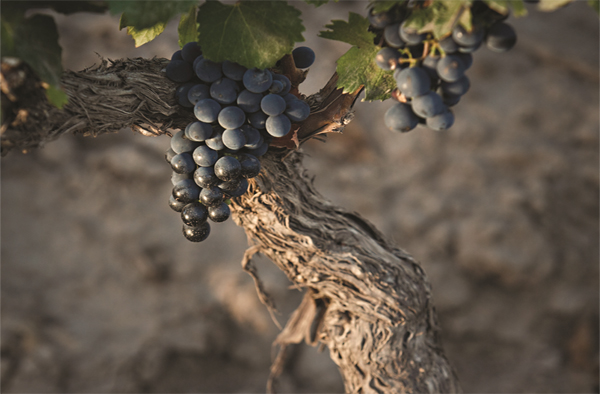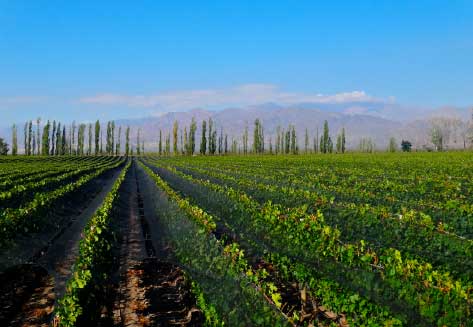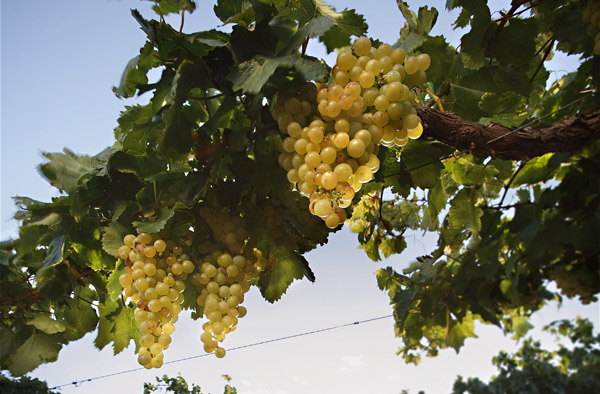
To most American wine drinkers, Malbec is almost inextricably linked to Argentina—like Zinfandel with California. It’s hard not to love Argentina’s take on the dark purple wine, rich on the palate and bursting with ripe blackberries—especially if you’re a carnivore. But, as with New Zealand and Sauvignon Blanc, which we covered last time, there’s much more to Argentina’s wine story than one variety. And Argentine Malbec itself has several personalities, because it clearly reflects differences in terroir. Here’s what wine lovers should know about Argentine Malbec and Argentina as a wine producer overall.
Argentina is huge.
The country of Argentina is roughly 2,300 miles long and 800 miles wide. That’s about the same size as Mexico and one-third the size of the continental United States. It’s home to 42 million people, more than one-third of whom live in the vicinity of Buenos Aires.
The Argentine wine industry is huge too.
Argentina has the seventh greatest vineyard acreage in the world, more than 550,000 total acres with 510,000 in production. In 2017, it was the 6th largest producer of wine in the world with 11.8 million hectoliters, behind Australia (13.9) and ahead of China (11.4). Argentina is also the world’s eighth largest wine consumer, so just 22% of its wine is exported. Argentina is now a major destination for wine tourism too.
Most Argentine wine production is in the northwest.
Argentina has four major wine-growing zones: North, Cuyo, Patagonia and Atlantica.

North is in the very northwest of the country and includes several subregions, including the important Salta subregion and San Carlos (pictured above).
Cuyo is directly south of North. It includes Argentina’s most famous growing area, Mendoza.
Patagonia is in the center of the country. It only has about 9,000 vineyard acres and focuses primarily on the most popular international varieties. In recent years, it’s Pinot Noir quality has dramatically improved and is earning critical acclaim.
Atlantica is near the Atlantic coast, south of the city of Buenos Aires. It’s only become a wine region in this century, so planted acres are few.
Mendoza has been an important viticultural center for almost 300 years and accounts for nearly 75% of all Argentine wine production.
Mendoza is essentially a high-altitude desert with broad valleys and plains. Altitudes in the wine-growing areas range from 1,400 to 5,300 feet. The Andes mountains to the west are a barrier to precipitation, so Mendoza averages just 8 to 12 inches of rain per year, little of which falls during the growing season. Snowmelt from the Andes provides water for essential irrigation.
Mendoza is large enough to be divided into five growing zones, some of which are subdivided themselves. The main five are North Mendoza, East Mendoza, Uco Valley, South Mendoza and Central Oasis, the latter including the important Maipu and Lujan de Cuyo growing areas.
Salta is the highest-altitude, large, viticultural region in the world.
Vineyards range from 4,200 feet all the way up to 10,200 feet in Salta. The elevation results in extremely low rainfall, but plenty of sunshine with warm days and cold nights. This makes Salta, and especially its Cafayete subregion, excellent for many grape varieties. Torrentes Riojano does especially well there and is the area’s signature grape. Other key grapes are Malbec and Cabernet Sauvignon.
Malbec is Argentina’s leading variety, representing 20% of production.
Malbec was first brought to Argentina in 1852 and it’s only Argentina that still has original, un-grafted plantings. With about 77,000 acres planted to the variety now, Argentina has six times more Malbec than France.
Argentina’s climate is well-suited to Malbec, which needs plenty of sun to ripen and is prone to damage from rain and humidity during the growing season. Whereas Malbec in France can be chewy with restrained fruit, Argentine examples typically have soft, though plentiful, tannins and rich fruit on both nose and palate.
Master Sommelier Evan Goldstein compares Argentine Malbec to California Zinfandel in that both are uniquely identified with their respective areas, have long histories there, and can be made in a style that clearly reflects terroir.
Malbec from Lujan de Cuyo is very dark in color with mineral on the nose and palate, along with black fruit and sweet spice. In the Uco Valley, Malbe is is more restrained, with flavors and aromas focused on spice and flowers. The cooler, lower altitude vineyards of Patagonia create Malbec that is lower in alcohol, higher in acid and features black fruit with spice. The high altitudes of Salta lead to rich, ripe Male with both red and black fruit, pungent spice and plenty of tannin.
Other top plantings in Argentina, mostly dark-skinned varieties, include international favorites and also some found almost exclusively there.
Cereza (14%): is native to Argentina and a natural cross of Muscat of Alexandria and Listan Prieto. Once Argentina’s most-planted variety, it’s now second due to the rapid expansion of Malbec acres. Cereza is used for simple, every-day white and pale rosé wines. It’s very popular as table grape and for grape concentrate, used for flavor and sweetening.
Bonarda, aka Charbono & Douce Noir (9%): This dark-skinned grape was once very popular in France’s Savoie, but there are only a handful acres remaining in the entire country. It once thrived in California’s North Coast, especially Napa Valley, but there’s only about 100 acres left in the state. In Argentina though, it’s a frequent blending partner for Malbec and Cabernet Sauvignon, with roughly 47,000 acres under vine. In blends, it adds fruit and color. As a varietal wine, it can improve for decades of careful cellar aging.
Cabernet Sauvignon (7%)
Criolla Grande (7%): This indigenous Argentine grape has seen its acreage steadily decreasing in recent years. The wines, rosé and tinted whites of indifferent quality, are low-priced domestic quaffers and not candidates for export.
Syrah (6%)
Pedro Giménez (5%): The name is confusingly similar to Spain’s Pedro Ximénez, used in Sherry, but the two are not related. Pedro Giménez is actually Argentine in origin. Once very widely planted there, its vines have been being aggressively pulled or grafted to other varieties lately. As with Criolla Grande, the wines are unexciting and very inexpensive.

Torrontes Riojano (4%): This most-planted and best-known Torrontes, is a natural cross of Muscat of Alexandria and Listan Prieto. But, unlike Cereza, which has the same parents, Torrontes Riojano can produce absolutely delightful wines. In the high-altitude vineyards of Salta, its propensity for elevated alcohol is curbed and the wines offer floral, stone fruit and citrus aromas and flavors with a juicy palate.
Chardonnay (3%)
JJ Buckley has several excellent Argentine releases to choose from, including very highly rated Malbec.
JJ Buckley guest blogger Fred Swan is a San Francisco-based wine writer, educator, and authority on California wines and wineries. His writing appears in The Tasting Panel, SOMM Journal, GuildSomm.com, Daily.SevenFifty.com, PlanetGrape.com, and his own site, FredSwan.Wine (formerly NorCalWine). He teaches at the San Francisco Wine School. Fred’s certifications include WSET Diploma, Certified Sommelier, California Wine Appellation Specialist, Certified Specialist of Wine, French Wine Scholar, Italian Wine Professional, Napa Valley Wine Educator and Level 3 WSET Educator. He's twice been awarded a fellowship by the Symposium for Professional Wine Writers.
Photos of grapes courtesy of Wines of Argentina. Photo of Nicasia Vineyard courtesy of Bodega Catena Zapata.